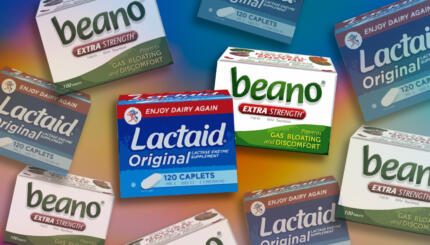Back in the 1970s the Israeli snack market was barren. In fact, there were so few options that the word for “snack” didn’t even exist in the Israeli language (it’s “chatif,” by the way). The few snacks available were mainly candy bars and gummies.
This all changed when Osem took over Israel with its revolutionary peanut butter puff snack Bamba, filling store shelves with the savory iconic Israeli snack. Bamba’s incredible success brought with it the pressure to follow up with another incredible snack. The company was looking to expand its offerings by tapping into the growing market of young people who craved something new and exciting to munch on.
This follow up wasn’t just a sequel to Bamba, however. It became Israel’s second most popular snack food, with a 15% market share in a survey done in 2007.
This snack was called “Bissli,” a fusion of the two Hebrew words, bis = bite and li = for me. But to understand how Bissli came to be we need to wind back the clock to 1975.
When Osem first started out, its bread and butter was selling soup mixes and boxed pasta for Israeli home cooks.
Enter Efraim Sa’adon, a longtime employee of Osem, who, in 1975, was working as a senior production manager at the Osem factory in Bnei Brak, where they produced the aforementioned pastas for households across Israel.
The eureka moment came when they brought a new deep fryer that wasn’t suitable for the existing production line. “Suddenly I had an idea. I threw a little bit of pasta into it, thinking about trying something new. At first it was inedible, but it was clear to everyone that it had potential,” Sa’adon related in an Haaretz interview from a few years ago.
They continued to tinker with the texture and kept fine tuning the seasonings and spices coating the fried pasta, coming up with the iconic flavors we now know and love like pizza, onion, falafel, grill and BBQ.
However Sa’adon’s Bissli of choice never made it to market. “I would take a handful of Bissli straight from the production line, hot and flaky without seasoning. I went into the office and added sugar. That’s my favorite.”
As the popularity of Bissli grew, they went from producing just 300 kg of the snack an hour to a whopping 1.5 tons. They introduced new flavors to keep up with changing tastes. Today, the Bissli family includes a variety of flavors such as smoked onions, Mexican salsa and spicy & sour, each flavor bringing its own distinct shape and texture, adding to the snack’s appeal.
Beyond its crunchy texture and bold flavors, Bissli holds a special place in Israeli culture; its familiar crunch is a nostalgic reminder of childhood for many Israelis.
It’s a snack that brings people together, often found at celebrations, from birthday parties to Independence Day gatherings.
While the most popular snack food in the rest of the world, potato chips, has a devoted following in Israel, it’s nothing like the legions of Israelis who grew up on a steady diet of Bissli and Bamba.
In many ways Bissli is a uniquely Israeli food. “We are the only country in the world that has this kind of product which is leading the market,” one of Israel’s leading snack marketing managers Doron Zilberstein maintains. “The logic behind the potato chip’s seeming lack of success might have less to do with local preferences and more to do with the historical development of both products. Potatoes were not as accessible here at one time as they are now. Corn and wheat, the staple ingredients in Bissli, could be easily grown in the country, making the snack more readily available.”
In addition to its popularity in Israel, Bissli has also made its way to international markets, particularly in Jewish communities around the world. It’s not uncommon to find bags of Bissli in kosher supermarkets in the United States, Canada and beyond, where they serve as a taste of home for Israelis living abroad or a taste of exotica for those interested in Israel’s savory innovations.
Despite these changes, the core appeal of Bissli remains the same: Its satisfying crunch and savory flavor keep you craving more, well after the bag is finished.



